 1962 Citroen ID II Dimensions, Size & Specs
1962 Citroen ID II Dimensions, Size & SpecsMeasurements of the 1962 Citroen ID II, engineered for optimal performance and comfort
| Dimensions | |
|---|---|
| Length: | 4874 mm191.9 in16.0 ft |
| Width: | 1803 mm71.0 in5.9 ft |
| Height: | 1470 mm57.9 in4.8 ft |
| Weight Specifications | |
| Curb Weight: | 1260-1280 kg2778-2822 lbs |
| Maximal permitted Weight: | 1610-1630 kg3549-3594 lbs |
The Citroën ID II, produced between 1964 and 1968, is a notable classic French sedan that offers a distinctive blend of size, comfort, and engineering typical of the early 1960s era. Based on the foundational Citroën DS platform, the ID II features a substantial yet elegant sedan body measuring 4874 mm (approximately 192 inches) in length, 1803 mm (about 71 inches) in width, and 1470 mm (around 58 inches) in height. These dimensions give the vehicle a poised road presence with balanced proportions suitable for comfortable family or executive transport during its time.
Weighing in with a curb weight ranging from 1260 to 1280 kilograms (approximately 2778 to 2822 pounds), the ID II maintains a moderate mass that contributes to both its stable ride and efficient handling. The vehicle's maximum allowable weight extends to approximately 1610 to 1630 kilograms (about 3550 to 3595 pounds), highlighting its designed capacity for passengers and luggage without compromising performance.
The Citroën ID II was designed as a sedan with an emphasis on aerodynamic efficiency and ride comfort, featuring advanced suspension technology for its era. Its sizeable footprint combined with relatively low height results in a sleek silhouette that sets it apart from contemporaries. This size classification places the ID II into the mid-to-large family car category, where it competed with other European sedans offering similar luxury and innovative design cues.
Overall, the Citroën ID II remains a significant model reflecting the technological progress and stylistic trends of 1960s French automotive design. Its dimensions and weight reflect a car designed for comfortable, practical motoring with a touch of elegance, making it a sought-after classic among enthusiasts today.
Discover the standout features that make the 1962 Citroen ID II a leader in its class
Have a question? Please check our knowledgebase first.
The Citroen ID II sedan, produced between 1964 and 1968, measures 4874 mm (191.9 inches) in length, 1803 mm (71 inches) in width, and 1470 mm (57.9 inches) in height. These dimensions contributed to its spacious interior for a car of its era, while maintaining a sleek and elongated sedan profile typical of mid-20th century European automobiles.
The Citroen ID II has a curb weight—meaning the weight of the vehicle without passengers or cargo—ranging from 1260 to 1280 kg (2778 to 2822 lbs). This relatively light weight, especially for a large sedan of its time, reflects its economical design and advanced engineering to balance durability and fuel efficiency. The lighter curb weight also potentially improves handling and braking performance in everyday use.
The Citroen ID II has a maximum weight (gross vehicle weight) rating between 1610 and 1630 kg (3548 to 3595 lbs). This figure includes the vehicle itself plus passengers, cargo, and fuel. Understanding this maximum weight is crucial for owners to avoid overloading, which can compromise vehicle safety, affect suspension and handling, and increase wear on tires and brakes.
A standard garage door is typically about 2400 mm (94.5 inches) wide and 2100 mm (82.7 inches) high. The Citroen ID II, with its width of 1803 mm (71 inches) and height of 1470 mm (57.9 inches), comfortably fits inside such garages. Its length of 4874 mm (191.9 inches) requires a reasonably deep garage, often found in typical residential garages, so owners should ensure sufficient depth but width and height should not pose issues.
Compared to the original Citroen ID, the ID II maintained the classic elongated shape but featured some dimension refinements. The length of the ID II is around 4874 mm, slightly updated from the earlier model, with a width of 1803 mm and height of 1470 mm, providing a slightly improved internal space and a more robust sedan presence. These subtle increases aided comfort and road presence while retaining the hallmark design cues of the predecessor.
The Citroen ID II, with its length of 4874 mm (191.9 inches) and width of 1803 mm (71 inches), positioned itself among the larger family sedans in Europe during the mid-1960s. Compared to contemporaries like the Volkswagen Type 3 or the Volvo Amazon, the ID II offered a distinctive aerodynamic design and unique hydropneumatic suspension. Its dimensions provided competitive interior space, making it a roomy and comfortable choice within its category, distinguished further by its advanced engineering features.
Leveraging its lengthy 4874 mm (191.9 inches) body and relatively wide 1803 mm (71 inches) stance, the Citroen ID II offered a spacious cabin environment for passengers. Its design allowed for generous legroom and headroom, particularly compared to other sedans of the 1960s. The relatively low height of 1470 mm (57.9 inches) did not compromise interior space thanks to clever design and the brand's focus on passenger comfort, especially for rear occupants.
With curb weight between 1260 to 1280 kg (2778 to 2822 lbs), the Citroen ID II managed to balance sturdy construction with agility. This weight allowed optimized fuel consumption, which was a crucial selling point in its era, and contributed to better maneuverability, especially given the car's advanced hydropneumatic suspension system aiding ride comfort. The relatively light weight helped sustain decent acceleration and handling characteristics for this large sedan.
Given its height of 1470 mm (57.9 inches) and width of 1803 mm (71 inches), the Citroen ID II fits comfortably in most residential garages with standard door heights around 2100 mm (82.7 inches) and widths near 2400 mm (94.5 inches). This means owners won't generally face issues parking indoors based on the car's dimensions. However, its length of nearly 4.9 meters (over 16 feet) means sufficient garage depth is necessary to prevent overhang.
The Citroen ID II's substantial size and moderate weight make it a practical daily vehicle, especially for those valuing interior space and comfort. Its dimensions allow for ample passenger and luggage capacity, while the relatively light weight contributes to efficient fuel consumption and easier handling in urban and highway conditions. The advanced suspension system enhances ride quality despite its size, making it comfortable for long-distance drives and city commuting alike.
Discover similar sized cars.

| Production: | 1962-1967 |
|---|---|
| Model Year: | 1962 |
| Length: | 4830-4838 mm190.2-190.5 in |
| Width: | 1790 mm70.5 in |
| Height: | 1470 mm57.9 in |
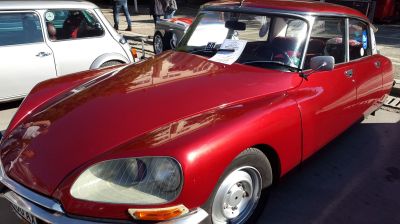
| Production: | 1967-1975 |
|---|---|
| Model Year: | 1968 |
| Length: | 4874 mm191.9 in |
| Width: | 1803 mm71.0 in |
| Height: | 1470 mm57.9 in |
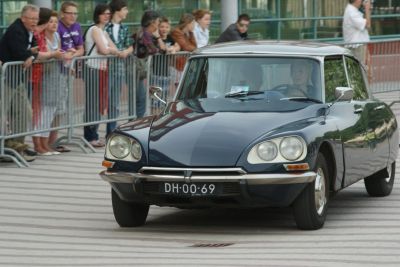
| Production: | 1968-1975 |
|---|---|
| Model Year: | 1968 |
| Length: | 4839-4870 mm190.5-191.7 in |
| Width: | 1791-1800 mm70.5-70.9 in |
| Height: | 1473 mm58.0 in |

| Production: | 1967-1977 |
|---|---|
| Model Year: | 1968 |
| Length: | 4780 mm188.2 in |
| Width: | 1760 mm69.3 in |
| Height: | 1410 mm55.5 in |
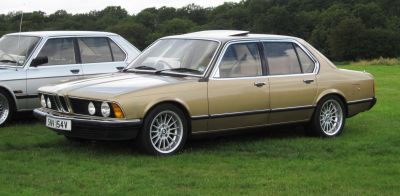
| Production: | 1977-1983 |
|---|---|
| Model Year: | 1977 |
| Length: | 4860 mm191.3 in |
| Width: | 1800 mm70.9 in |
| Height: | 1430 mm56.3 in |
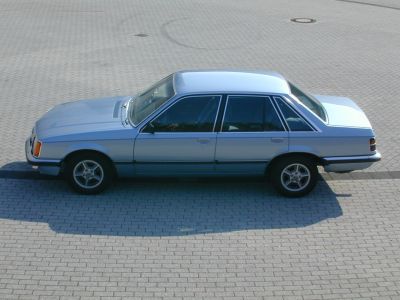
| Production: | 1978-1982 |
|---|---|
| Model Year: | 1978 |
| Length: | 4811 mm189.4 in |
| Width: | 1728 mm68.0 in |
| Height: | 1415 mm55.7 in |
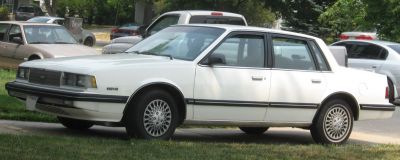
| Production: | 1982-1989 |
|---|---|
| Model Year: | 1982 |
| Length: | 4783 mm188.3 in |
| Width: | 1758 mm69.2 in |
| Height: | 1377 mm54.2 in |

| Production: | 1983-1986 |
|---|---|
| Model Year: | 1983 |
| Length: | 4860 mm191.3 in |
| Width: | 1800 mm70.9 in |
| Height: | 1430 mm56.3 in |
